|
BULB LOG 08 --21st February 2007
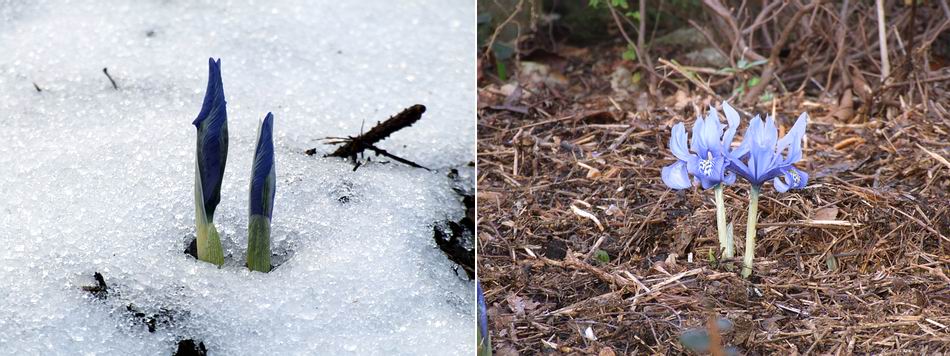
Iris histrioides 'Major'
The milder conditions we have experienced this past few days heralds the rush into flower of the earliest of the spring bulbs, or are they winter bulbs? A few days ago the shoots of Iris histrioides 'Major' were poking through the thin layer of snow and then in the weekend's sunshine they are bursting into bloom. You can see from the picture that I did manage to spread a mulch of our own garden compost over this bed before the bulbs pushed through. I have spread about half of the compost that is ready. I will have to get a move on as it becomes a much more difficult job to spread it without doing damage once the bulbs are through the ground.
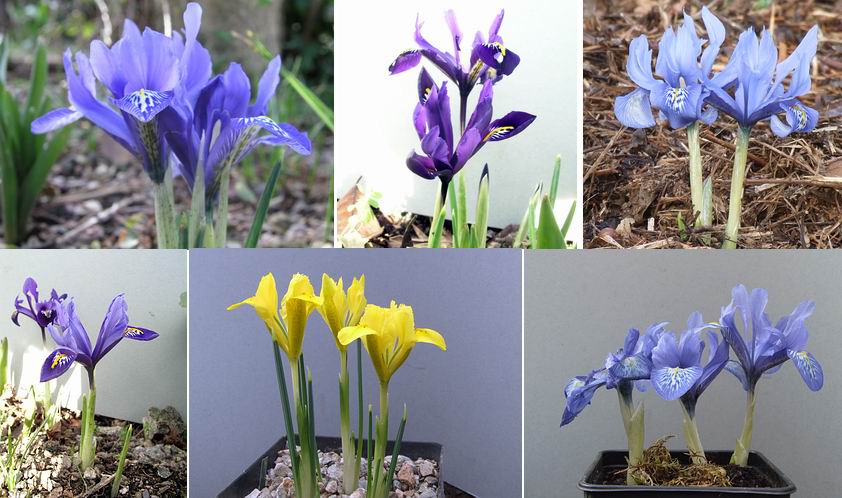
Reticulate iris
The reticulates are my favourite group of irises partly because they are easy to please, growing happily in the garden without much trouble and they are considerably tougher than they look.
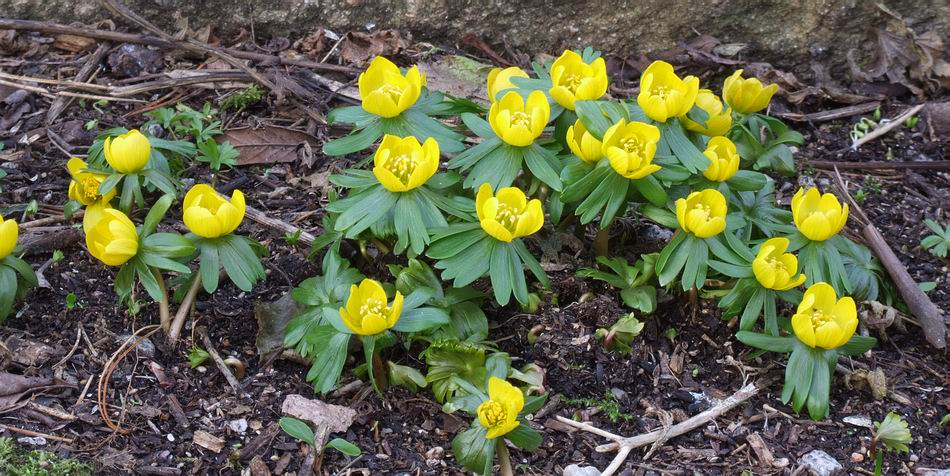
Eranthis hyemalis
A very reliable early flowering bulb is Eranthis hyemalis. I had some difficulty establishing this initially as I was buying dried tubers in late summer but about 15 years ago I was allowed to dig up a wee flowering group of self sown seedlings from Jack and Peg Crosland's garden. These took very well in their new home and have been seeding themselves around in our garden, just as I had admired them at Torphins.
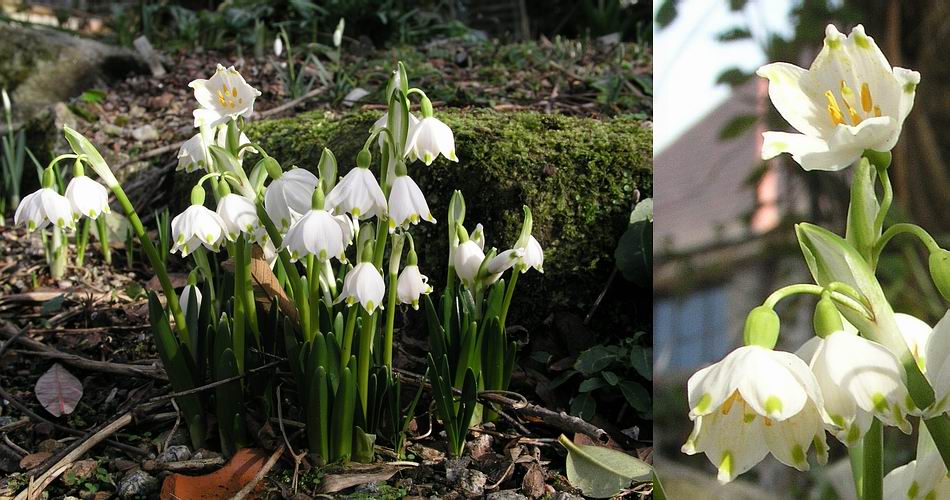
Leucojum vernum
In all the galanthus hysteria, here is one for the leucojocks, Leucojum vernum in its var carpathicum 'Podpolozje'. Var carpathicum is separated because it has yellow tips to the petals instead of green but I find that this is not a stable feature. Granted the colouring of the tips can be a good yellow but more often they are a yellowy green sometimes even varying from one side of the flower to the other, plus the ovary is also yellowy green. I think the variation of the colour is due to temperature or light levels or both. This excellent cultivar was introduced by Janis Ruksans from near the village of Podpolozje in the eastern Carpathians and is distinguished by having twin flowers on each mature stem.
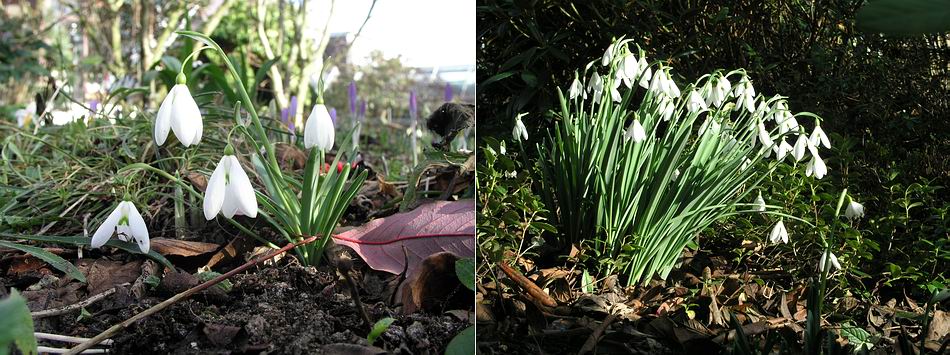
Galanthus
And just to restore the balance are a couple of galanthus; one form the 'Mighty Atom' group whose flowers are so large the stem can hardly hold them upright and the other I think might be 'Atkinsii'.
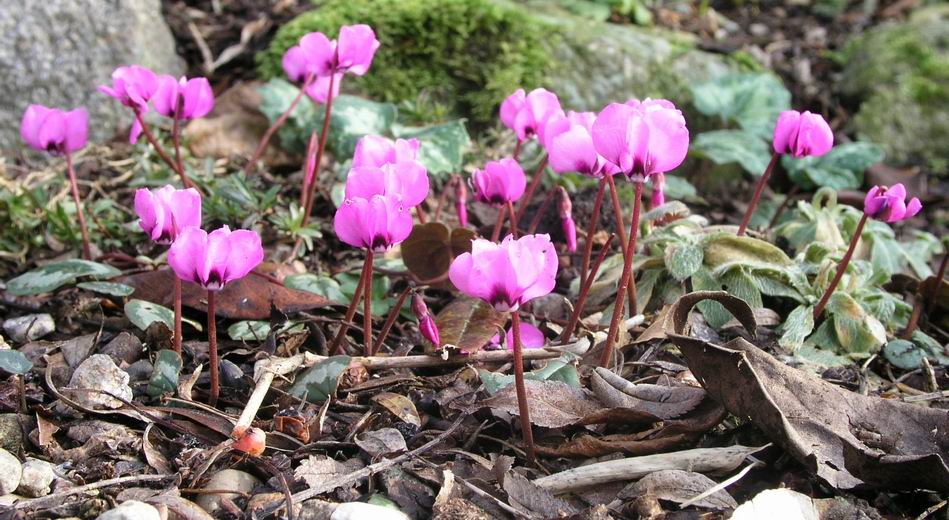
Cyclamen coum
One of the better flowering plants of Cyclamen coum, which is usually never that happy in our garden, is this one that gets more sunshine. I think that is part of the answer to getting better flowering of Cyclamen coum, so all the recent seed that I have scattered has been into the areas that get most sunshine.
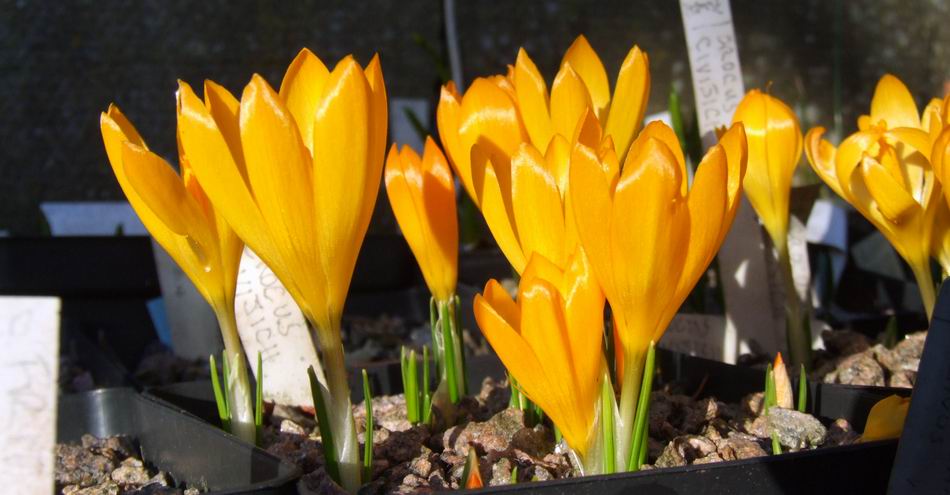
Crocus civijicii
In the low sunshine the colour of Crocus civijicii is so intense. These are flowering in an outside frame and are a good week ahead of the pots that I have in the glasshouse which are only just pushing through now. The reason for this difference in flowering time is that the outside ones have had a more even and greater level of moisture allowing them to grow sooner than the ones under glass which are kept that bit drier and so are held back.
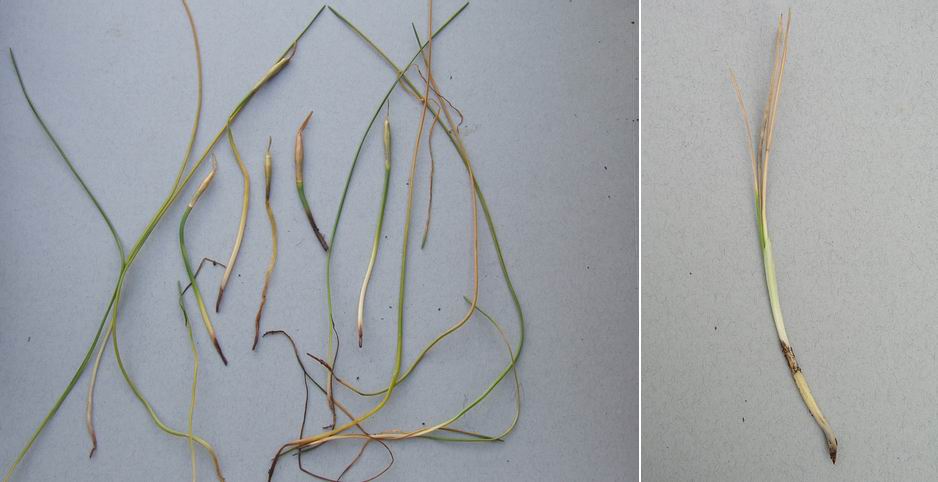
Rot on Narcissus and Crocus leaves and stems
Controlling moisture levels is the most important and difficult challenge of growing bulbs in pots under glass especially in the fluctuating conditions between warm sunny days then wet and cold days we get at this time of year. The leaves and stems above were showing signs of yellowing so I gently tugged them to see if they offered any resistance and in these cases the answer was no, they simply came away in my hand. You can see from the bottom of the leaves and stems that they have suffered from wet rot. I have got the moisture levels wrong for these individuals. This does not necessarily mean that I have lost the bulb; it may well survive but it will be smaller at the end of the season. Also it is not a whole pot of bulbs that has suffered in this way just the odd individual bulb that may be a clone more susceptible to rot under cold wet conditions, a bulb that had a small damage allowing rot to form, or it is simply a bulb in the spot in a pot that holds the moisture better. Having plucked the affected lea
ves I will let the pot dry out a bit more before I water it again.
On the other hand if the pots get too dry then the roots can be damaged and in severe cases the bulbs retreat into a survival mode and make no further growth that year. In what I call 'survival mode', different types of bulbs react in different ways but a very typical reaction to drought is that the bulbs break down into many, much smaller bulbs that will take several years to attain flowering size again.
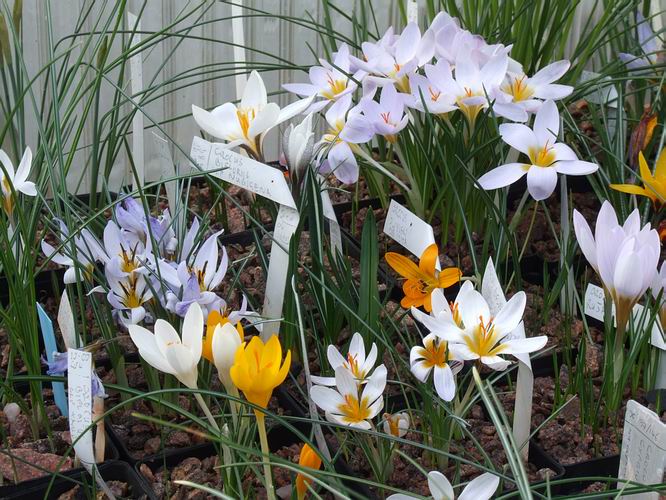
Crocus in annex
There is a tendency when you are faced with all the problems of growing bulbs in pots, such as wet rot like above attacking a few of your bulbs, to get depressed and think, is it worth growing these things at all when despite my best efforts I keep losing them? This feeling usually lasts for a few seconds or until I turn my eye and see all the pots of bulbs that are perfectly happy, growing well and in glorious flower. This makes it all worthwhile and reminds me that while the problems weigh heavily on my mind they are in actual fact very few in number compared to the successes.
As you can see Crocus season has arrived under glass in Aberdeen.
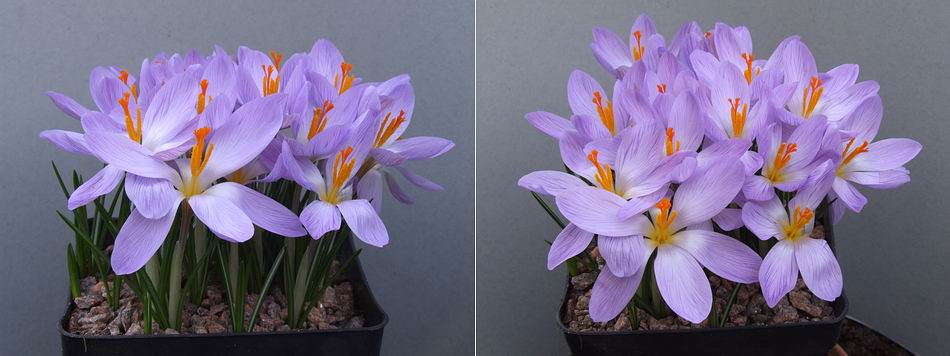
Crocus etruscus
Many pots of crocus, like Crocus etruscus, burst into flower for a few hours when the sun was at its highest and the temperature of the glasshouse rose.
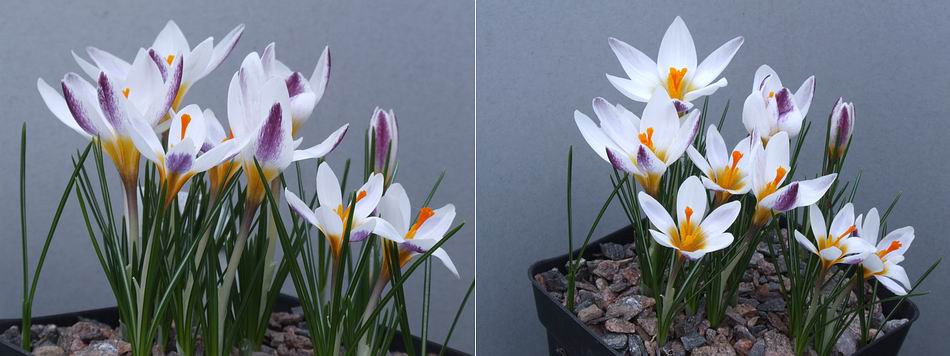
Crocus sieberi sieberi
A pot of Crocus sieberi sieberi seedlings shows the considerable variation that can be found in this beautiful sub species of Crocus sieberi.
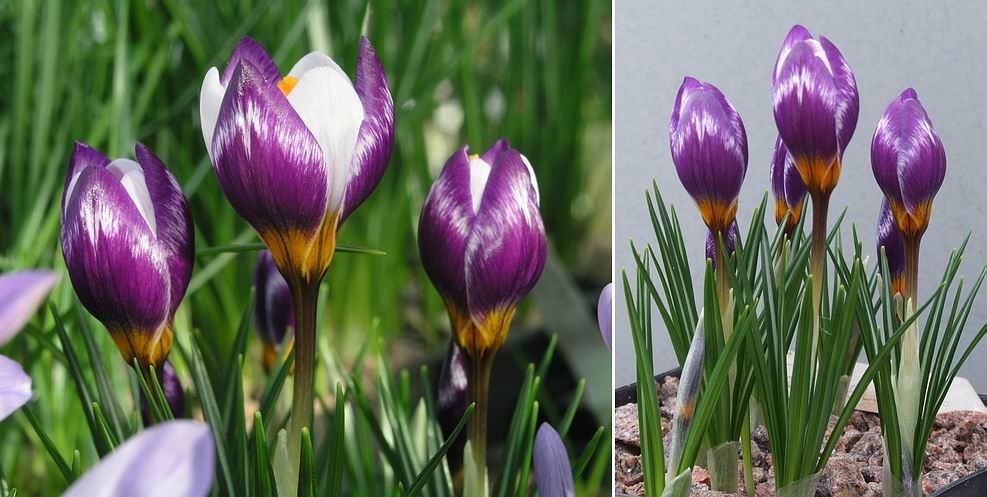
Crocus sieberi 'Hubert Edelsten'
One of the most dramatic selections from Crocus sieberi is this cultivar 'Hubert Edelsten' said to be a cross made in cultivation between Crocus sieberi sieberi and sieberi atticus.
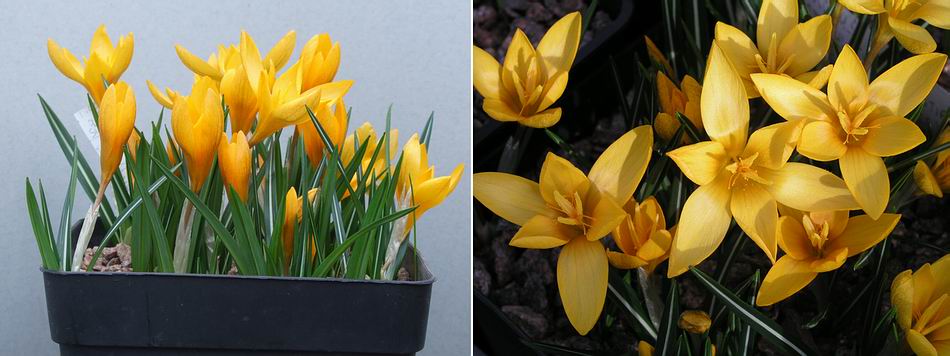
Crocus olivieri
The bright yellow flowers of Crocus olivieri a species which can be partially identified by the very broad leaves with a pronounced silvery white stripe down the centre.
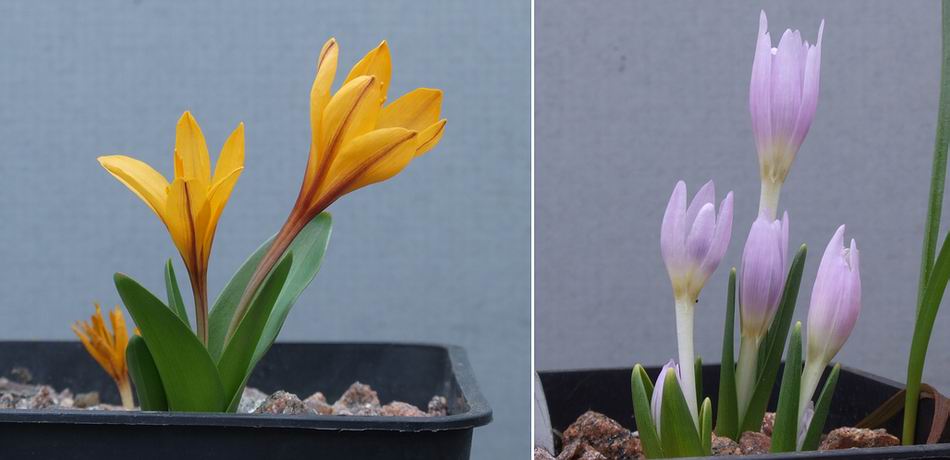
Colchicum luteum x kesselringii and hungaricum
It is not just the crocus that are taking advantage of the milder conditions, here are two of the smaller spring flowering colchicums. My own hybrid between Colchicum luteum x kesselringii, while still appearing and flowering, is not increasing at any rate at all so it looks like being a long time before I have a pot full of it. Fortunately Colchicum hungaricum does increase steadily for me.
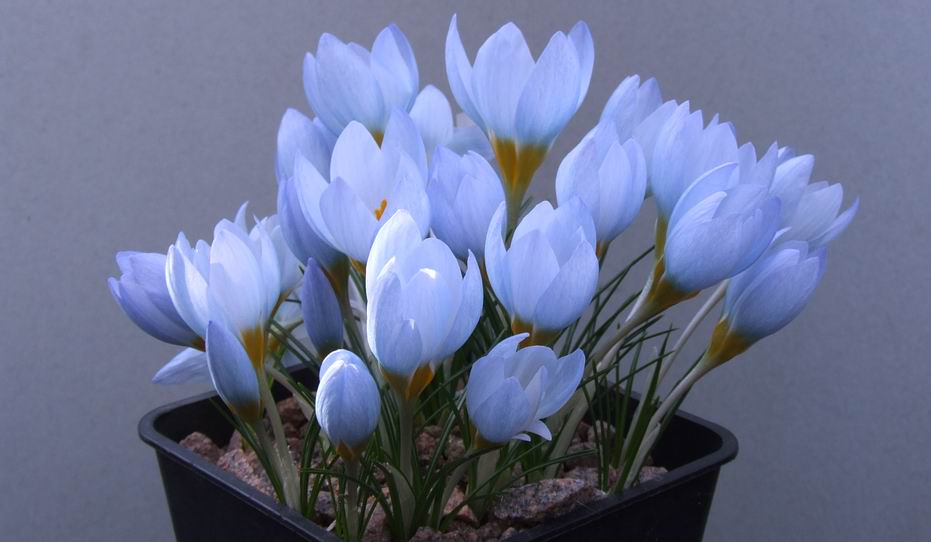
Crocus abantensis
I will leave you this week with one of the most beautiful blues, Crocus abantensis, an easy crocus to grow either in a pot or planted in a well drained bed
^ back to the top ^
|

